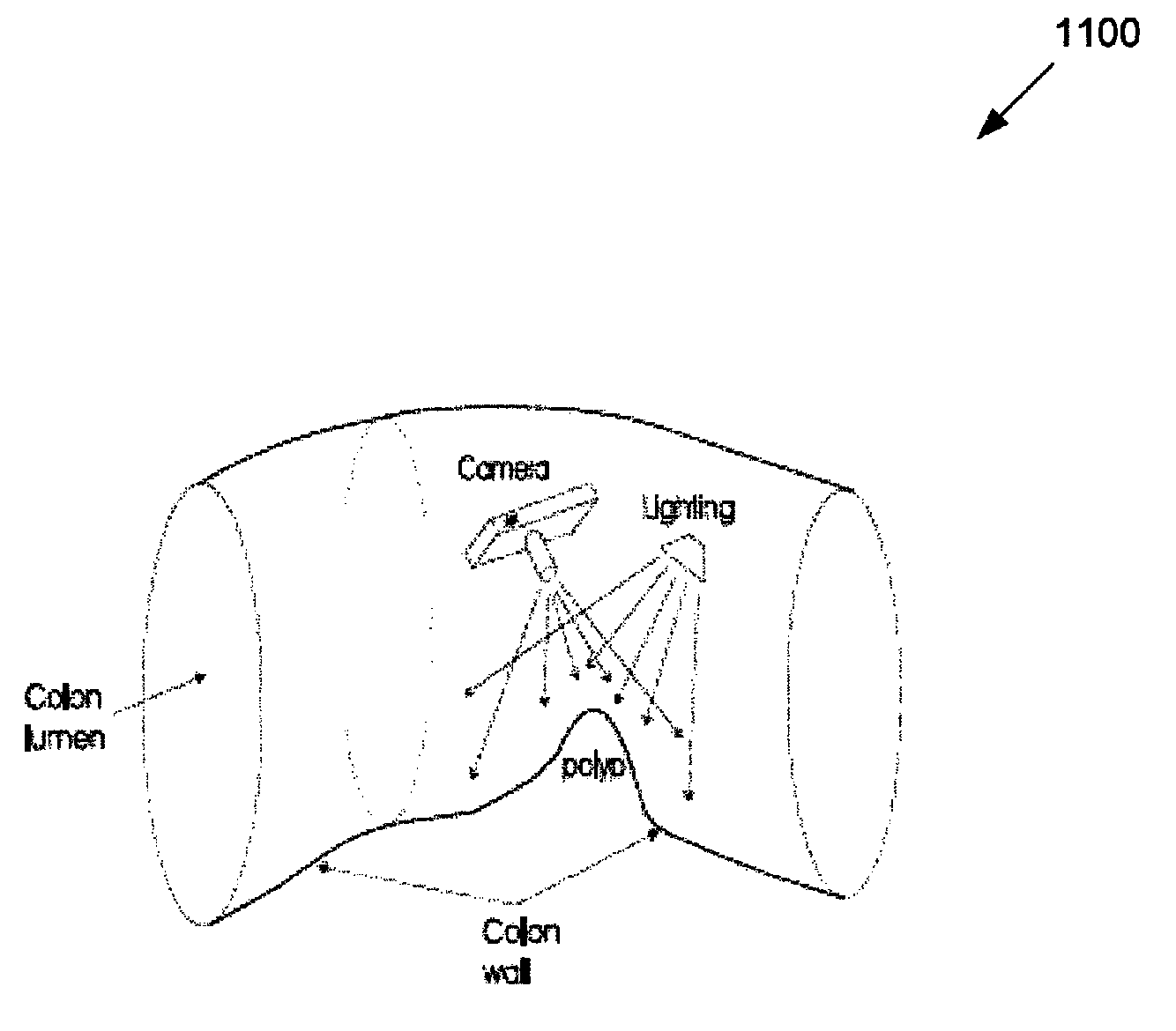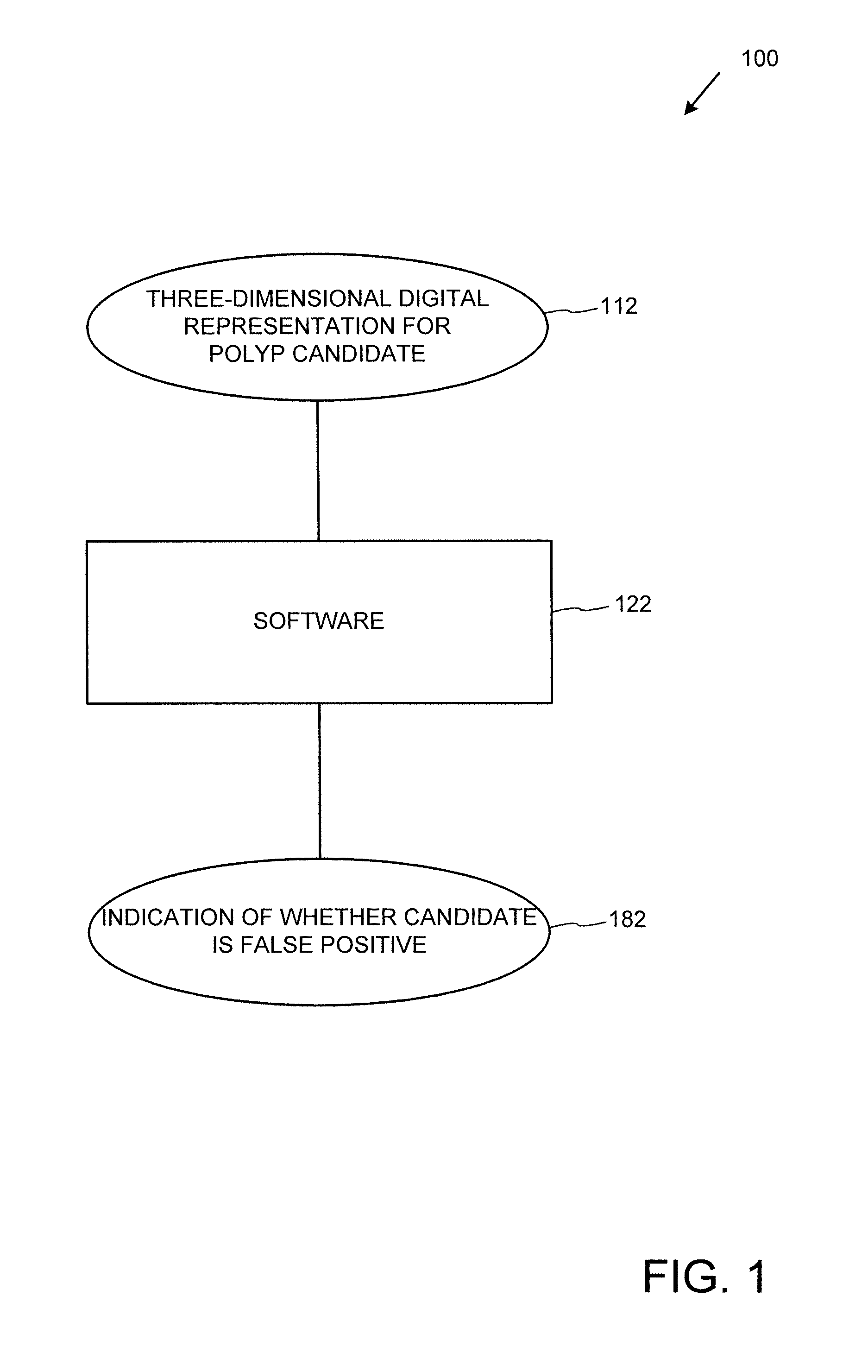Virtual colonoscopy via wavelets
- Summary
- Abstract
- Description
- Claims
- Application Information
AI Technical Summary
Benefits of technology
Problems solved by technology
Method used
Image
Examples
example 1
Exemplary System Configured to Determine Whether a Polyp Candidate is a Polyp
[0057]FIG. 1 shows an exemplary system 100 configured to determine whether a polyp candidate is a polyp. In the example, a three-dimensional digital representation for a polyp candidate 112 is processed by software 122, which outputs an indication 182 of whether the polyp candidate is a polyp.
example 2
Exemplary Method of Determining Whether a Polyp Candidate is a Polyp
[0058]FIG. 2 is a flowchart of an exemplary method 200 of processing a three-dimensional representation of a polyp candidate to output an indication of whether a polyp candidate is a false positive. The method 200 can be implemented, for example, in a system such as that shown in FIG. 1.
[0059]At 210, a three-dimensional digital representation for a polyp candidate is received. At 220, the three-dimensional digital representation is processed. For example, any of the classification technologies described herein can be applied to the representation of the polyp candidate.
[0060]At 230, an indication of whether the polyp candidate is a polyp is outputted.
example 3
Exemplary Polyp Candidates
[0061]As described herein, a polyp candidate can be any portion of an anatomical structure that has been determined to possibly contain a polyp (e.g., by software that evaluates a virtual anatomical structure for polyps). In practice, the polyp candidate can be specified by a location within the anatomical structure (e.g., via coordinates or some other mechanism). Software can provide a list of one or more polyp candidates that can be processed by the technologies described herein to determine whether they are indeed polyps or false positives. Polyp candidates are sometimes called “polyp detections” herein.
PUM
 Login to View More
Login to View More Abstract
Description
Claims
Application Information
 Login to View More
Login to View More - R&D
- Intellectual Property
- Life Sciences
- Materials
- Tech Scout
- Unparalleled Data Quality
- Higher Quality Content
- 60% Fewer Hallucinations
Browse by: Latest US Patents, China's latest patents, Technical Efficacy Thesaurus, Application Domain, Technology Topic, Popular Technical Reports.
© 2025 PatSnap. All rights reserved.Legal|Privacy policy|Modern Slavery Act Transparency Statement|Sitemap|About US| Contact US: help@patsnap.com



